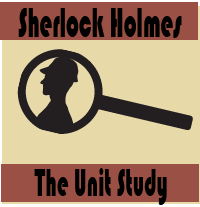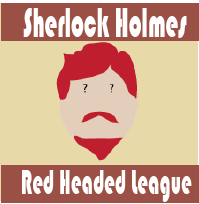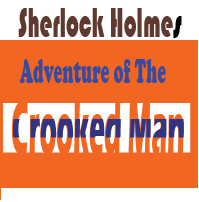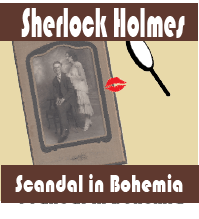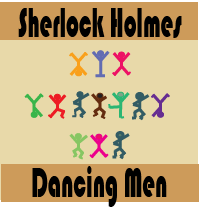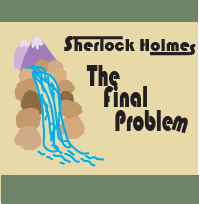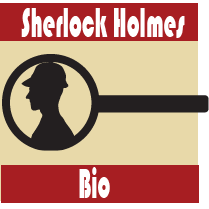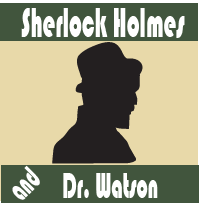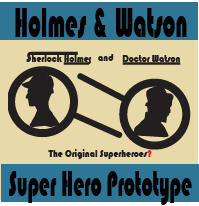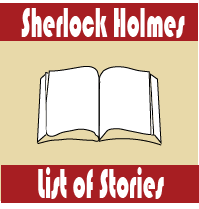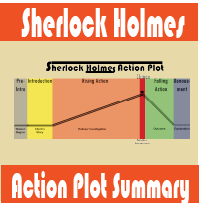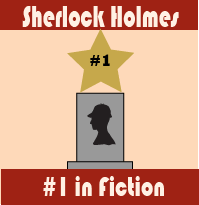Sherlock Holmes Unique Features
Examine some of the unique features that put the Sherlock Holmes short stories in a category by themselves.
Pre-Introductory Pronouncements
A unique feature of the Sherlock Holmes tales is the Pre-Introductory Pronouncements - a well-conceived element missed by most readers. This is a statement made by Watson or Holmes in the pre-introduction that intimates the ending of the story. Look for the subtle hint buried in the first paragraphs.
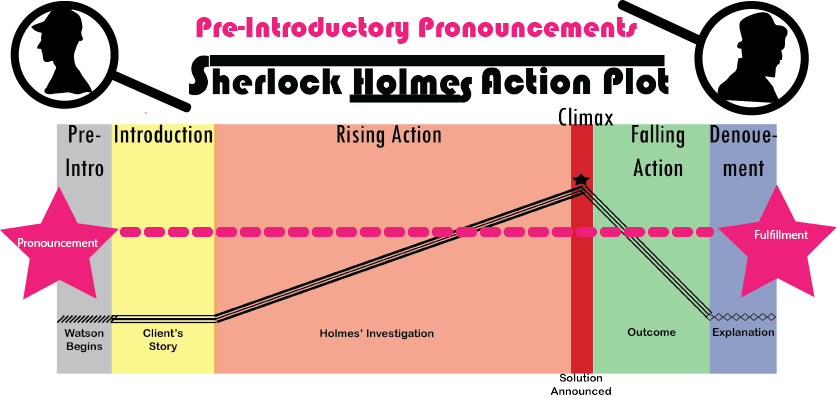
3 Different Types of Sherlock Holmes Openings
Doyle gifted his readers with three different types of openings in the sixty stories.1. Watson's Dilemma
A common opening is a lengthy statement by Watson that boils down to something like this:In choosing which case to write about, I have decided not to publish cases that are not ABC (adjective) but rather showcase Holme's XYZ abilities. This story I am about to tell does/does not do either ABC or XYZ. (my paraphrase)
The ABC and XYZ change slightly but usually represent something like the following:
- ABC: I prefer not to write about sensational cases
- XYZ: I like to write about cases that showcase Sherlock's deductive powers
For those of you with a bent for algebraic reasoning, Watson's Dilemmas and the subsequent plot can be boiled down to four possibilities:
- -ABC AND +XYZ (What Watson prefers; no sensation; great deduction)
- +ABC and -XYZ (a sensational case without deduction)
- -ABC and -XYZ (no sensation, no deduction; this is a non-event.)
- +ABC and +XYZ (a sensational case with amazing deduction. These of course are the best stories. But Doyle probably used a different type of story starter.)
2. Baker Street Scene
Ah, the classic opening: the camera zooms in on Holmes at his Baker Street flat, bent over a test tube, lounging on the sofa in his dressing gown, throwing down the newspaper in disgust. In addition to watching the master detective in his opening act, we also get to listen to a dialogue between the Watson/Holmes duo. Listen carefully before they are interupted by their next visitor for the nuggets of sarcastic wit dropped by Holmes may indeed be the answer to the client's puzzle.3. Power Statement
These are my personal favorite starts to a Sherlockian tale. Who can ever forget such starters as "To Sherlock Holmes she is always the woman." Or mayber even better: "Mrs Hudson, the landlady of Sherlock Holmes, was a long-suffering woman." Character descriptions riddled with humor, irony, and amateur psycho-analysis follow. Such opening statements and the sentences that follow provide rich fodder for the Sherlockian analyst.Note: A number of stories have more than one type of opening in the pre-introduction (the part prior to the arrival of the client and the introduction of the case.)
Action Plot Diagram
Doyle developed a basic plot structure that he used in his stories, and deviated from time to time to serve his literary purposes. The typical Sherlock Holmes action plot included these parts of the story:- Pre-introduction - Watson describes Holmes or his case or methods
- Introduction - A visitor arrives at 221b Baker Street and explains his/her problem
- Rising Action - Holmes hits the field to investigate. He alludes to his theory but does not expound it.
- Climax - The solution is announced as the culprit and motivation are unmasked.
- Falling Action - Sherlock explains his reasoning to Watson and we learn what happens to all the parties.
- Denouement - Final details are explained, Holmes issues a philosophical or flippant remark as the case closes and he moves on.
A Closer Look At Holmes
A flawed genuius. His black silhouette is recognized by every child, yet his colorful personality has been analyzed and cross-analyzed since his name first appeared in print.To say that Holmes is a round character or complex personality does not begin to describe him. Almost every story in the canon provides at least one or two sentences that reveal the mosaic nature of Holmes.
You might enjoy reading direct quotes about Sherlock's personality from various stories.
Or you might want to read Character Analysis of Sherlock Holmes along with other biographical information.
Dr. Watson's Role
Of course Dr. Watson is the narrator of the Sherlock Holmes' short stories - his most obvious role and a very literary one. Movie producers, on the other hand, struggle to account for the presence of the super-sleuth's side kick.Watson plays an essential role in the narrative which is not so obvious when reading a single short story. In the individual stories, in fact, he is basically a flat character. In the outer frame, however, Watson is a round, complex character. But it is from those individual stories we extract the points that paint this multiplex personality.
Read more about the many roles of Dr. Watson - both in Holmes' detective practice and in the story as a whole.
Fictitious Transparency
Doyle employs circular transparency in his narrative as Watson purports to publish Holmes' cases. These Watson-written stories are then folded into the Doyle-written story as an element rarely applied in literature.The Watson-written stories add a certain depth to the narrative. For instance, many of the openings begin with Watson musing what case he should publish next and why. Watson's published accounts are sometimes a topic of dispute between he and Holmes in the pre-introductory phase of Doyle's stories as Holmes ridicules Watson's romantic story-telling.
As a reader, perhaps you have chuckled under your breath as Holmes reassures a new client that Watson's discretion can be trusted as much as his own, while Watson jots down notes for his next narrative.
Watson, as a biographer, meanwhile creates a new role for himself that is rarely explicitly explored. In introducing Sherlock to his writers, he is making Sherlock famous. So much for being nothing but an assistant: Sherlock owes his popularity with the public to Watson.
Let's look at three different groups of "readers":
- Watson's readers: those who read the tales in an unstated publication and admired their London detective
- Doyle's original readers: those who eaglerly awaited the next story published in The Strand Magazine
- The rest of us: most of us recognized Holmes prior to reading our first grade primers
But we can say that neither Sherlock, nor Watson, nor Doyle were hurting for cash once the stories gained in popularity. We might say that Doyle and Watson conspired together to create Sherlock. It is part of their fictitious transparency.
Sherlock the Writer
We can't let Watson get all the credit as a published author; Sherlock himself had multiple professional articles written. He calls them monographs (writing on a single subject.)- A-Chapter 2: "Book of Life - Science of Deducation and Analysis" describes how one can deduct everything about a person by observation
- H-42 CARD: Two articles in Anthropological Journal about distinction in humans ears
- H-42 BRUC: The Polyphonic Motets of Lassus - the most authoritative work on the subject, so it is reputed
- H-44 DYIN: Article on malingering - oh the hypocrite! He mentions this article while he is doing it!
Dating of Sherlock Tales
For those of you who think the date is merely a piece of demographic info, welcome to the tangled times of Sherlock tales! Each story possesses FOUR separate dates for starters:- The date the event occurred (identified by month and year in MOST stories. Beware the contradictions!)
- The date which Watson wrote and published the story for his fictitious readers (sometimes stated in terms of length of time since the events transpired.)
- The original publication date of the story (usually in The Strand Magazine.)
- Publication date in book form, which occured when Doyle had published enough individual short stories to make a collection. It could have been the same year as the magazine publication, or as long as 9 years later.
Contradictions in the Text
Ask any honest Sherlockian and they will tell you, the stories contain contradictions from time to time. Dates, names, even the location of Watson's injury. How can this happen with a detective who leaves every clue unexamined?The Sherlockian Gamers (fans who spend considerable energy finding explanations so that the entire canon is a true history) will blame typographical errors, temporary lapses in memory, even additional wives for Dr. Watson in order to make everything work out perfectly.
I can offer to you a simpler explanation, though one that does not play the game of making a real history out of a fictitious character. The truth is that all writers have to go back and make changes in their story to make them fit. In Sherlock's case, Doyle published sixty stories as he wrote them. Unlike an author of a sixty chapter book, he could not go back and change the information in chapter one to make it fit with the information in chapter sixty. It was already published.
Actually, it was more than simply published. It was consumed by an expanding and adoring public in over forty languages. No corrections were possible. So Doyle just shrugged his shoulders and kept writing. If a few details didn't line up, he didn't seem to lose much sleep over it. Neither should we.
The Ending of the Story
In the majority of stories, the tale ends with a remark by Sherlock. Much of the time these are flippant remarks which stand in contrast to the austere and somber persona for which he is known.But Doyle does throw in other types of endings.
For more fun, note how the ending ties (or doesn't tie) to the pre-introduction.
The Singular Use of the Word "Singular"
"Singular" appears to be Sherlock's single favorite word. Or perhaps it was Doyle's. It is used at least once (and in many cases, only once) in each story.In The Adventure of the Six Napoleons singular was used six times. Coindicidence?
I don't know. But it is singular.
Irrelevant Intrusions
Sherlock often frustrates and amazes his clients and readers by throwing unexpected questions at them when they least expect it.This irrelevancy occasionally leads those in the official force to doubt his professional ability, or even his sanity. But have no fear, he is way ahead of everybody in cracking the case.
But just WHAT could he be thinking? You have to wait until he is ready to give his own explanation to find out.
The Baker Street Treasure Hunt
At one point, I noticed that many of the stories contain a reference to interesting objects that Holmes keeps in his Baker Street apartment. Most stories contain one such reference to something found nowhere else. So just for fun, we have a Baker Street Object Hunt. See if you can find the object in your reading. Or better yet, are you such a dedicated fan of the series you can identify the objects with the stories? We will have a quiz here for you in a bit. So come back and join the Baker Street Treasure Hunt.Buy Sherlock Holmes: The Unit Study
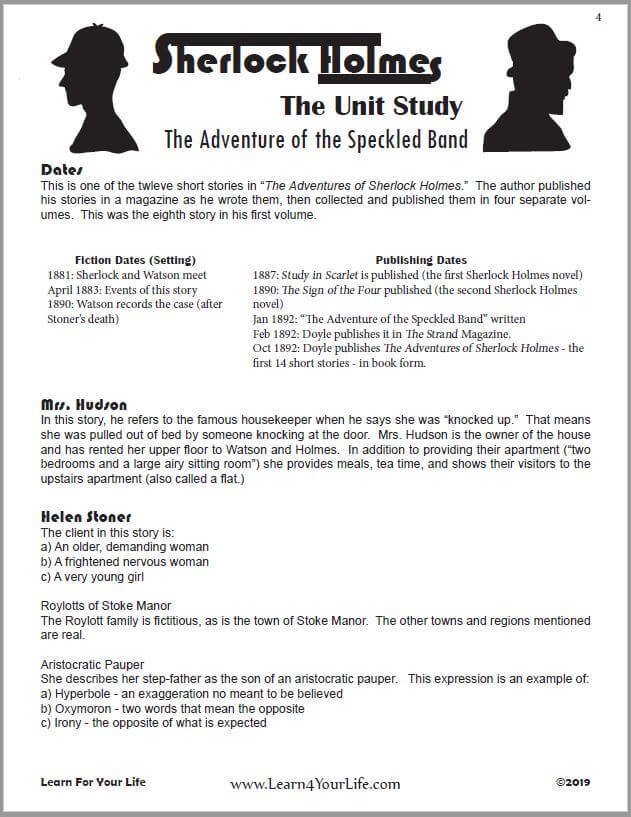
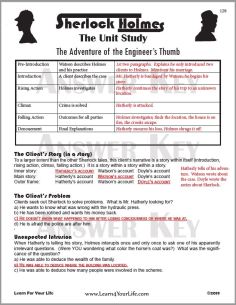
Student Guide AND Teacher's Answer Key Included
$2.99 Download - 183 pages
Eight of the most popular tales demonstrate how to investigate a detective story.
![]()
Sherlock Holmes Pages
A catalog of our pages on Sherlock Holmes.

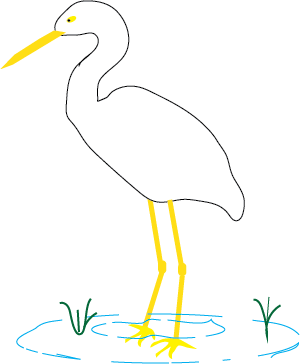
About Our Site
Hands-On Learning


